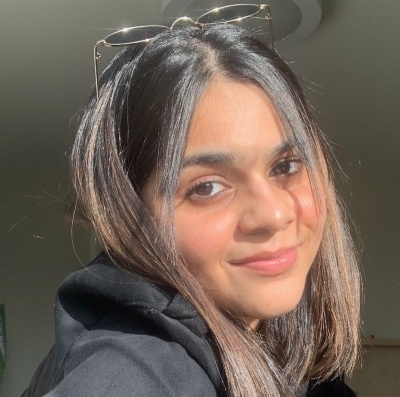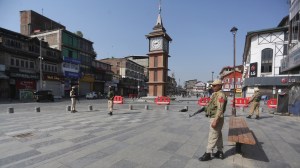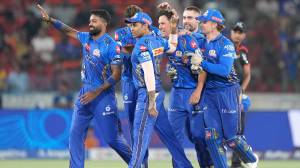From Panipat to Balochistan: Tracing the Maratha community’s journey through history
Following their capture after the Third Battle of Panipat in 1761, Maratha captives in Balochistan adapted and thrived, preserving their Marathi heritage for generations. From festivals to everyday customs, the Bugti Marathas’ story is one of survival, resilience, and a deeply rooted identity that transcends borders.
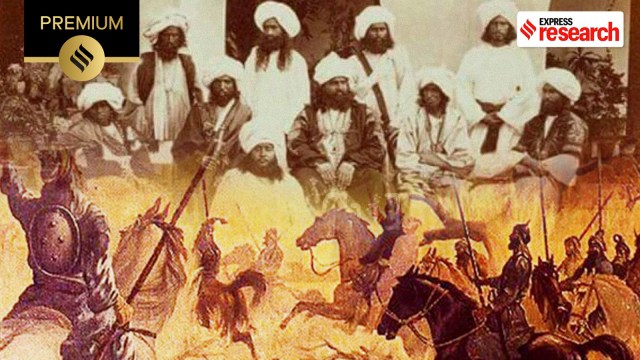 The Marathas in Balochistan (Edited by Abhishek Mitra)
The Marathas in Balochistan (Edited by Abhishek Mitra)In the early 19th century when the British were attempting to expand in the Indian subcontinent, they were faced with just one major regional power capable of destroying their emerging empire – the Marathas. Spread across several small kingdoms, from modern-day Tamil Nadu in the south to Gwalior in the north and Odisha in the east, the Marathas, at one point, were said to have occupied a third of the subcontinent.
Though the regime set in place by Chhatrapati Shivaji Maharaj dissipated by the early 1800s, in Maharashtra, the Marathas continue to have a resounding presence. Ever since the birth of Maharashtra in 1960, 12 of the state’s 20 chief ministers have been Marathas, including the incumbent Eknath Shinde. Issues related to the Maratha community, including the heavily debated demand for reservation, consistently frame electoral narratives in the state’s polls.
In this four-part series, we will take a deep dive into the multi-faceted history of the Marathas and unravel some remarkable and unknown facets of the community’s evolution over the centuries.
In 2023, Baloch, a Marathi film directed by Prakash Pawar premiered on Amazon Prime. The movie sheds light on a forgotten chapter of history — the Maratha captives taken to Balochistan following the Third Battle of Panipat in 1761.
In a more contemporary setting, Karachi-based social media influencers Sameer Kay and Vishal Rajput have been documenting Pakistan’s Marathi community, particularly its vibrant Ganpati celebrations. Through their detailed YouTube videos, the duo offer an intimate view into the community’s rich traditions, from festive feasts of halwa-puri-modak to the poignant immersion ceremonies.
The Marathi-speaking diaspora in Karachi, though significant, is not the first from Maharashtra to have established roots in Pakistan. So who were the earliest settlers? How did they navigate life in a foreign land? And, perhaps most intriguingly, do they still cling to their original identities? The answers reveal a fascinating tapestry of migration, captivity, and resilience.
Marathas, Ahamd Shah Durrani, and the battle for control
After the death of Emperor Aurangzeb and the decline of the Mughal Empire, the Maratha Confederacy expanded rapidly, posing a threat to Ahmad Shah Durrani’s (also known as Ahmad Shah Abdali) Afghan Empire. To counter this, Ahmad Shah launched a campaign, capturing large parts of Punjab and aiming to starve the Maratha forces. In response, the Marathas assembled a large army under Sadashivrao Bhau, who managed to reclaim Delhi.
Ahmad Shah sought to trap the Maratha forces in Punjab, cutting off their supplies while moving troops southward. Surrounded by the enemy and starving, Sadashivrao Bhau attempted to break the siege, leading to a confrontation at Panipat in 1761. In part II of his book, Medieval India, historian Satish Chandra observes that “the Bhau would not have been able to prevail over the Abdali, saddled as he was with heavy artillery and womenfolk.” He contends that while the Maratha soldiers primarily relied on lances and swords, the Afghan forces held a significant advantage with skilled musketeers equipped with quick-loading flintlock guns and mounted on “swift, well-trained horses.” This technological and tactical superiority, combined with internal rivalries within the Maratha ranks, ultimately weakened their forces. The smaller but unified Ahmad Shah army decisively overwhelmed the Marathas.
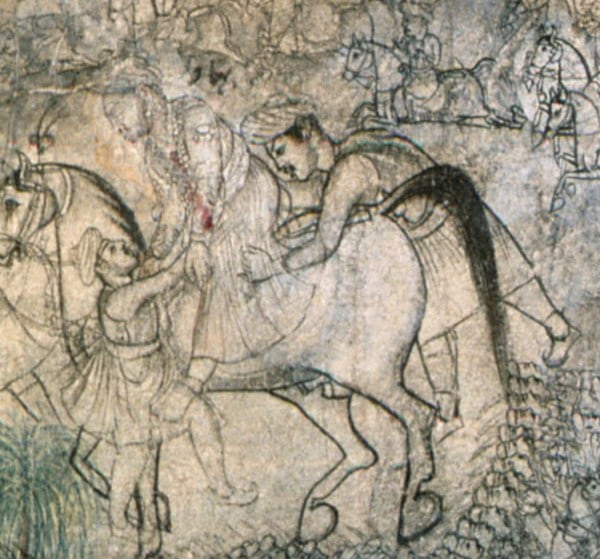 Third Battle of Panipat, 1761 (Source: Wikimedia Commons)
Third Battle of Panipat, 1761 (Source: Wikimedia Commons)
The third battle of Panipat on January 14, 1761, devastated the Maratha army, ended their ambition to succeed the Mughals, and plunged northwestern India into decades of instability. “The ultimate beneficiaries were not the Maratha sardars and erstwhile Mughal nobles who stood for regionalism, but the English who brought in centralism of a new-kind, the colonial type,” notes Chandra.
Narratives of early communities
Following the crushing defeat at Panipat, only a few hundred of the Peshwa’s army survived, seeking refuge in the jungles of Haryana. Today, they are known as the Rod Marathas, a community of nearly seven to 10 lakh people, spread across Karnal, Rohtak, and Bhiwani.
Yet, as history buff and co-author of Travels with Nandighosh Yashwant Marathe writes in his blog, for 22,000 other men, women, and children, fate was far harsher. Captured as prisoners, they were marched to Afghanistan alongside Ahmad Shah’s forces. While many women and children were rescued by Sikh warriors during the army’s passage through Punjab, Marathe argues that those who crossed into Balochistan’s Dera Bugti region faced a grim future. In the gripping opening of the film Baloch, the narration vividly captures the captives’ fear: “Every step was taking them away from their home, with the fear that they would never see it again.”
In gratitude for his Baloch allies’ support, Ahmad Shah ‘gifted’ the Maratha prisoners to Mir Nasir Khan Noori, the Baloch ruler. However, this was less an act of generosity and more a way to rid himself of exhausted captives under the guise of diplomacy.
The Maratha captives were then divided among the tribes of Bugti, Marri, and Gurchani, among others, forming new communities and blending into Balochistan’s social fabric. “The Marathas we are discussing are not spread across Pakistan, but are specifically located in Balochistan. Keeping the group together was a risky decision, which led Nasir Khan to implement the policy of dividing them,” says engineer and history enthusiast Sudhir Dandekar.
 Ahmad Shah Durrani (Source: Wikimedia Commons)
Ahmad Shah Durrani (Source: Wikimedia Commons)
In an interview with indianexpress.com, Abhas Verma, author of Third Battle of Panipat, says, “The Maratha Bugtis in Balochistan are an interesting case of what may be a caste forming even under Islamic rule.”
“The prisoners of war, including children, were sold into slavery and held captive. The group was also forbidden from owning land and forced to convert to Islam,” he says. However, Verma emphasises that these narratives remain largely undocumented due to a lack of research and the sentiments within the Maratha community.
“Regardless of their yearning to return,” he continues, “the region was hostile, and the distance of return was a long and uncertain journey they could not think of making.” Verma’s book mentions the story of a Brahman named Narhari Ranalekar, who, after returning from captivity to his home in Paithan (in present-day Aurangabad district in Maharashtra), sought acceptance from the Brahma Sabha, having been forcibly converted to Islam. After much deliberation, the Sabha agreed to welcome him back.
In his book Pakistan A Hard Country, British author and journalist Anatol Lieven recounts an encounter with a local Nawabzada Jamil Bugti in Quetta. Lieven was struck by the “small, thin, dark-skinned” servants accompanying Bugti. Upon inquiring, he learned that they were descendants of the Marathas from central India, “captured in war by the Mughal emperors and given to their Bugti troops as slaves in lieu of wages.”
Despite enduring forced conversions to Islam and harsh conditions in the arid lands of Balochistan, the Marathas displayed remarkable resilience, preserving their cultural identity for over two centuries. Their heritage is still evident in their customs, surnames, and rituals. The Bugti Marathas, for instance, continue to celebrate weddings with haldi ceremonies, Saptapadi rituals, and Marathi traditions such as crossing a rice bowl to enter a new home.
Dandekar also highlights the common custom of ear-piercing, which remains prevalent among the Maratha community in Balochistan. “Another instance that comes to mind is the popularity of the Marathi film Ramshastri in the theatres of Quetta, the capital city of Balochistan, during the mid-20th century. The pride the Marathas in Balochistan take in their roots was evident,” he says.
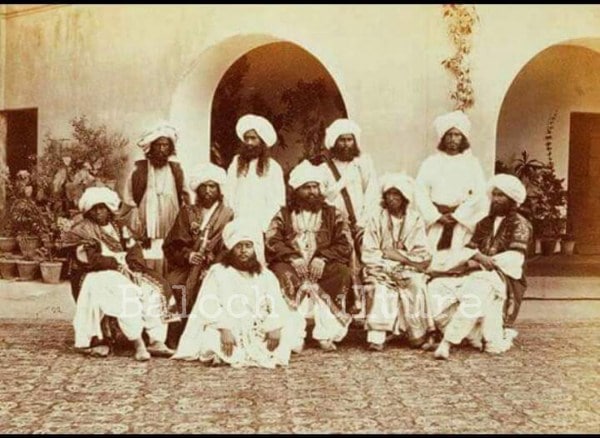 Chiefs of Baloch tribes (Source: Wikimedia Commons)
Chiefs of Baloch tribes (Source: Wikimedia Commons)
The Marhtta Qaumii Itehad, the largest organisation of the Maratha community in Balochistan, garnered significant attention in 2017 when they joined their Indian counterparts in the agitation protests for reservation. The chief, Wadera Din Muhammad Marhtta Bugti, expressed solidarity on a Facebook post, stating, “We fully support the protest in India. We condemn any injustice meted out to the community and agree that there should be a reservation quota for them when it comes to government jobs and education. In Pakistan, the rights of the community have been established. Why can’t it be the same in India?”
For generations, these Marathas’ lives were marked by hardship and displacement. Over time, however, they began to work their way toward prosperity. Today, many have risen to prominent positions in society. Their contributions to agriculture in Balochistan stand as a testament to their endurance. As Dandekar says, “It is thanks to the knowledge and hard work of these Maratha descendants that farming began to flourish in the Baloch region.”
Years Later
Verma categorises the migration of the Marathi-speaking diaspora to Pakistan into three distinct phases: “After the Battle of Panipat, the other two key events marking the movement of Marathi-speaking groups to Pakistan were the Partition of British India, which caused widespread displacement, and the post-partition migration of merchants from Bombay to Karachi for business purposes.”
While there were also movements of labourers to Pakistan, most of these were voluntary, starkly contrasting the forced migrations of the early captives to Balochistan. Despite these challenges, the Marathas’ resilience endured, and today, the Marhtta Qaumii Itehad proudly continues to uphold this legacy. Its leaders have, on numerous occasions, expressed their pride and solidarity with the broader Maratha community
Lieven also noted that “there was no sign of Bugti blood in the faces of the Nawabzada’s [Maratha] servants.” Though officially made equal citizens of Pakistan after 1947, and despite figures like Nawabzada Bugti claiming that ‘they have merged completely with the Bugti and no one can tell their difference anymore,’ this group continues to preserve its roots and reclaim its history.
Pawar’s movie poignantly closes with a line that encapsulates the spirit of the Maratha community: “We have to tell our descendants that the Panipat war was not the last war of Maratha, but the final battle was fought in Balochistan where the Marathas emerged as the winners.”
(The next part in our series will look at the significance of Bombay to the Marathas.)
Further Reading:
-
Pakistan A Hard Country by Anatol Lieyen
-
Kabulnama by Firoz Rande
-
Third battle of Panipat by Abhas Verma
-
The Maratha Century by Uday S. Kulkarni
Must Read
Buzzing Now
Apr 24: Latest News
- 01
- 02
- 03
- 04
- 05

